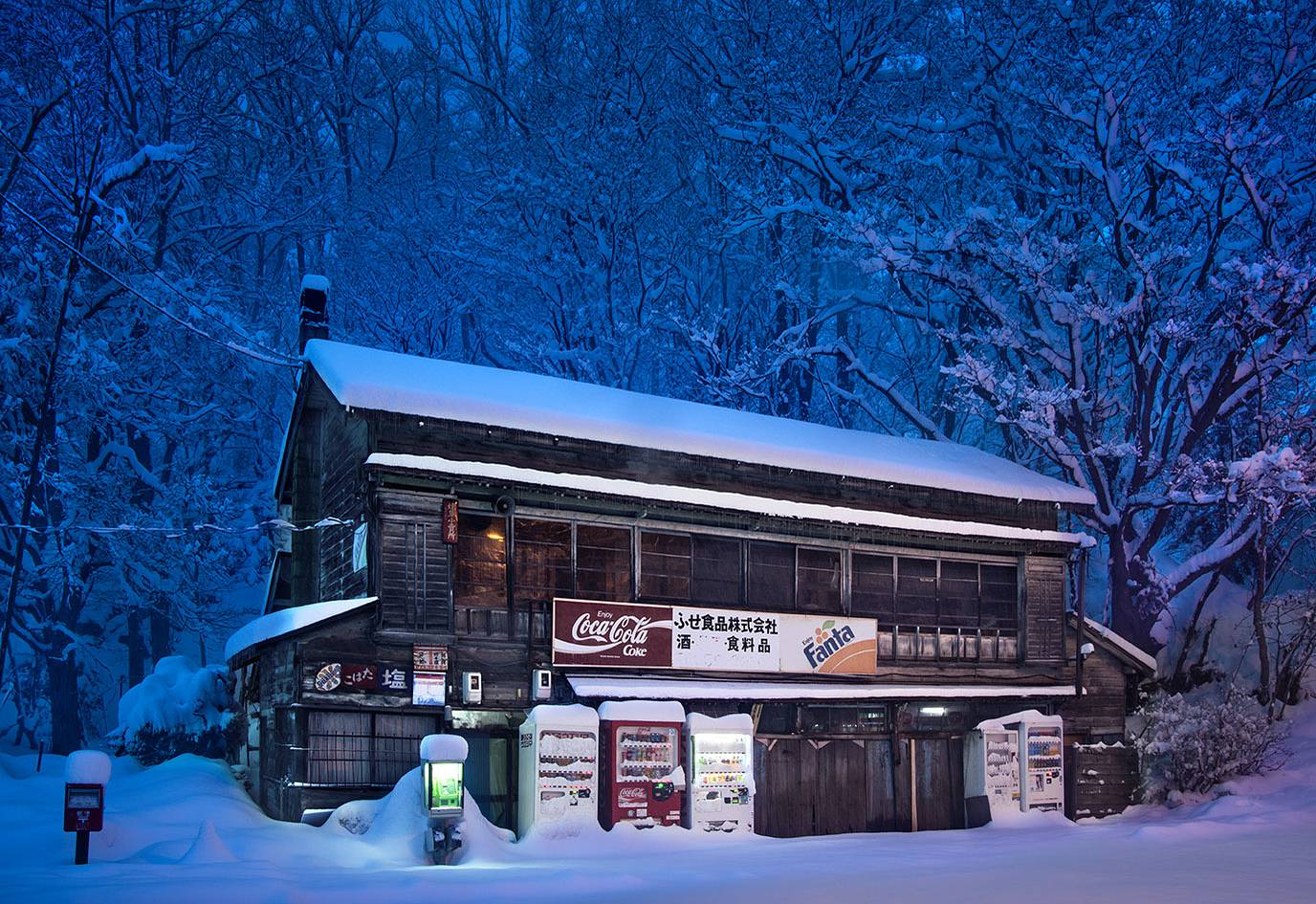An In-Depth Talk with Eiji Ohashi on How Vending Machines Shape a Community
1 16 Share TweetIn Japan, vending machines have become a staple and iconic infrastructure that does not only resonate as a convenient machine for emergencies, but also as a source of relief, comfort, and light. This has been proven during the earthquake of 2011, in which vending machines were the first to be fixed so that people could immediately and easily get drinks. The warmth and light in the cold and dark days -- a poetic way to think about the "jidohanbaiki".
The series "Roadside Lights" is a survey of the Japanese vending machine and its purpose to the community -- whether urban, rural, or end-of-the-road areas. We talk to photographer Eiji Ohashi as he reveals his thoughts and personal reflections with Lomography Magazine.
Hi Eiji, welcome to Lomography Magazine! Firstly, describe to us the place you're currently living in. What's it like? What do you love about it?
I currently live in Hokkaido, which is the northernmost island in Japan. There is a lot of snow in winter, but we have many beautiful sceneries and rich foods.
When Japan's getting talked about, it's always and usually about Tokyo, then Kyoto. What's distinct about Hokkaido, and how does it differ from the capital?
Hokkaido has a shallow history and no old customs compared to other areas. As a result, people's way of thinking is relatively free. Living in Hokkaido comes with difficulties, such as the winter snow. However, there are vast empty spaces, and we can live comfortably. When we live in Tokyo, we can have a very convenient life, but it will be cramped, in a narrow home. When we live in Hokkaido, we do not have to worry about such problems.
Your photographs of vending machines are very elusive and thought-provoking. What inspired you to photograph landscapes with vending machines?
I was very attracted by vending machines shining on a snowy evening. I know that vending machines are machines, but I want to call out to them as if they were human beings.
The machines are often portrayed as huge sources of light. Since the machines can be found all over Japan, how important are they to the contemporary Japanese society?
We can live without vending machines. But the Japanese are too used to life with them and are heavily reliant on them. We really need to think what we really need for us to live.
What's your favorite drink or item to purchase from the vending machine?
Any, depending on the weather. We use vending machines because we can get warm drinks and cold drinks at any time.
In general, where do you draw inspiration from? Who are your muses?
I use photographs to express images that are not visible in my normal life. I especially react to glowing things.
If you could work or collaborate with any photographer or artist, who would it be?
I have much respect and admiration towards the American photographer George Tice.
Describe to us -- what's a day in the life of Eiji Ohashi?
My life is about taking pictures for myself.
What do you usually do during your downtime? Any ongoing project, or other plans you're keen to work on?
I run on my days off. We have two or three new projects lined up, but they are still in the planning stage. One goal of mine is to help advance the knowledge and understanding of photography
Can't get enough of Eiji's photography? Read our insightful feature or visit his website for more of his photography.
2017-08-29 #people #japan #landscape-photography #eiji-ohashi










































One Comment